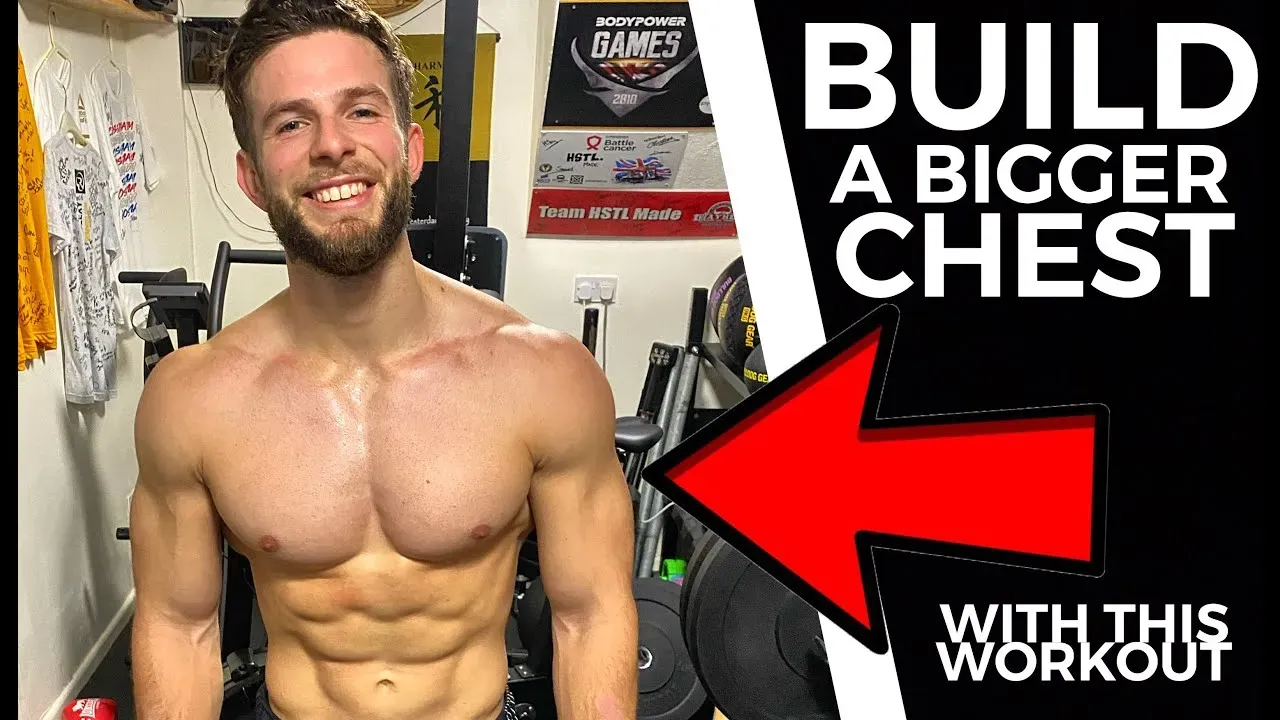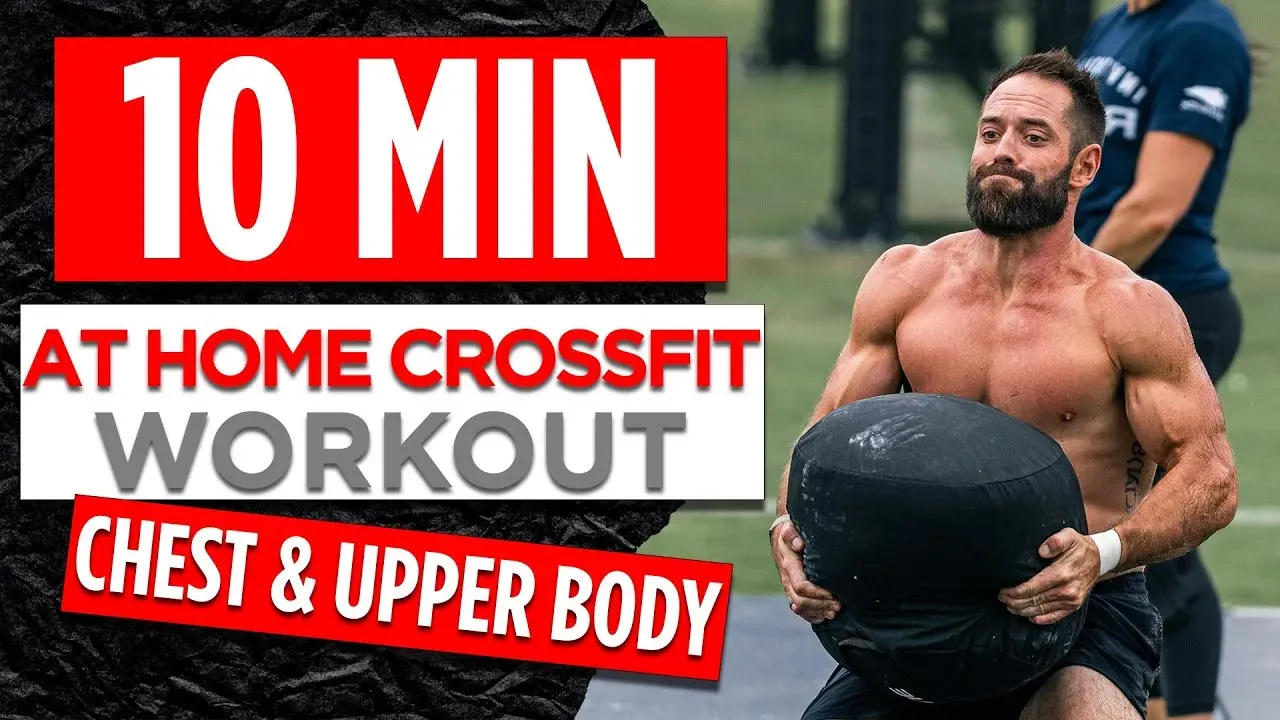Table of Contents
Thinking you can't build a serious chest doing CrossFit, especially when you're stuck at home? Plenty of folks figure CrossFit is all about Olympic lifts, gymnastics, and sweating buckets in high-intensity intervals, leaving traditional bodybuilding splits like "chest day" by the wayside. And sure, CrossFit programming is designed to hit everything, but sometimes specific weaknesses need focused attention. A strong chest isn't just for looking good in a t-shirt; it’s crucial for crushing movements like handstand push-ups, ring dips, and even keeping a stable midline during heavy lifts. If you're looking to shore up that pressing power and build some functional pecs without stepping foot in a box, you're in the right place. This article cuts through the noise to give you the concrete details on how to execute an effective crossfit chest workout at home. We'll cover the essential movements you can actually do with minimal equipment, how to weave them into your training, nail the technique, and keep those shoulders happy so you can keep pressing strong.
Why a Strong Chest Matters for CrossFit (Even at Home)

Why a Strong Chest Matters for CrossFit (Even at Home)
Beyond the Bench: Pressing Power in CrossFit
Look, nobody signs up for CrossFit just to build a massive bench press. If that's your sole goal, there are more direct routes. But dismissing chest strength entirely in a CrossFit context is just naive. Think about it: handstand push-ups? That's a vertical press, heavily involving your shoulders and triceps, sure, but a weak chest leaves you unstable and struggling at the bottom. Ring dips? Pure chest, shoulders, and triceps working against gravity and the instability of the rings. Even pushing a sled requires significant pectoral engagement. Ignoring this muscle group means you're leaving power and efficiency on the table for a whole host of movements that pop up in WODs. It's not about vanity; it's about functional strength that directly impacts your performance.
Stability and Balance: More Than Just a Pretty Pec
It's not just about pushing weight away from you. A strong chest contributes to overall upper body stability. When you're overhead squatting, doing handstand walks, or even just holding a heavy clean in the front rack, your chest muscles play a role in maintaining posture and control. Neglecting your chest while hammering your back and shoulders can also lead to muscular imbalances, increasing the risk of shoulder issues down the road. Nobody wants to be sidelined with tendinitis because they thought chest work was "unnecessary" for CrossFit. Building a balanced, strong upper body, including the chest, is just smart training. It lets you tackle those tough WODs and skill work sessions more safely and effectively, even when your "box" is your living room.
Key Benefits of a Strong Chest in CrossFit
- Improved Handstand Push-Up Performance
- Stronger Ring Dips
- Enhanced Stability in Overhead Movements
- Better Pushing Power for Sleds and Presses
- Reduced Risk of Shoulder Imbalances
- Increased Upper Body Durability
Essential Exercises for Your CrossFit Chest Workout at Home
Bodyweight Basics: Building a Foundation
Alright, let's get real about what you can hit for a crossfit chest workout at home without a full gym setup. Bodyweight is your best friend here. Push-ups are the absolute cornerstone. Forget fancy variations for a second; can you do a solid set of standard push-ups with your chest hitting the deck and full lockout at the top? Most people can't do as many *good* reps as they think. Elevate your feet on a chair or couch to increase the difficulty and shift more load onto the upper chest and shoulders. Use rings or parallettes if you have them to get a deeper stretch at the bottom, which is money for hypertrophy. Don't underestimate these; they're simple, but brutally effective if you actually focus on form and tension.
Adding Weight: Dumbbells and Rings
Once you've mastered the push-up variations, or if you have some basic equipment, you open up more possibilities for your crossfit chest workout at home. Dumbbell floor press is a fantastic alternative to the bench press when you don't have a bench. You lose some range of motion, sure, but it's still a solid pressing movement. You can do flat presses, incline presses (by propping yourself up slightly), and even flyes for that extra squeeze. Ring dips, if you have rings and a place to hang them, are arguably one of the best overall upper body pressing exercises out there, hitting the chest, shoulders, and triceps hard while demanding stability. They're humbling, effective, and a staple in CrossFit for a reason.
Key Home Chest Exercises
- Standard Push-Ups (Floor or Elevated Feet)
- Ring Push-Ups (for depth and instability)
- Dumbbell Floor Press (Flat or Incline)
- Dumbbell Flyes
- Ring Dips (if possible)
- Pike Push-Ups (for upper chest/shoulder blend)
Building Your CrossFit Chest Workout at Home Program

Building Your CrossFit Chest Workout at Home Program
Integrating Chest Work into Your Home WODs
so you're sold on needing a stronger chest for your CrossFit endeavors, even when confined to your living room. How do you actually program this? You're not just going to do 5x5 bench press if you're following typical CrossFit programming. The trick is integration. You can add dedicated chest work as a warm-up primer before a WOD that involves pressing, like thrusters or push jerks. A few sets of quality push-ups or dumbbell floor presses can wake things up. Or, you can tack it onto the end of a strength or skill session. Think of it as accessory work – the stuff that builds the foundation and shores up weaknesses that the main course WOD might not fully address. It's about being strategic, not just randomly throwing in some push-ups. A solid crossfit chest workout at home doesn't replace WODs, it complements them.
Programming Principles for Home Chest Gains
Building strength and size still requires some foundational principles, even with limited equipment. For a crossfit chest workout at home focused on building muscle, you need volume. That means hitting those muscles with enough reps and sets. Aim for sets where the last few reps are challenging, even on push-ups. Don't just blast through 50 sloppy reps; do sets of 10-15 with good form, rest briefly, and repeat. For strength, you'll need to find ways to add resistance – heavier dumbbells if you have them, or using bands with push-ups or floor presses. Frequency matters too. Hitting your chest 2-3 times a week with different stimuli (strength focus one day, higher volume/endurance another) is usually more effective than one massive, infrequent session. Consistency trumps everything.
Sample Home Chest Integration Ideas
- Warm-up: 3 sets of 10-15 quality push-ups before a pressing WOD.
- Accessory: After a strength session, do 3 sets of dumbbell floor press for max reps with challenging weight.
- Finisher: 4 rounds of Ring Push-ups to failure with 60 seconds rest.
- Skill Prep: Practice weighted dips (if possible) or elevated push-ups before working on handstand push-up progressions.
Maximizing Your Results & Staying Healthy (Mobility, Variations)

Maximizing Your Results & Staying Healthy (Mobility, Variations)
Maximizing Your Results & Staying Healthy (Mobility, Variations)
Alright, you're putting in the work with your crossfit chest workout at home, hitting those push-ups and floor presses. But just grinding out the same movements every time is a one-way ticket to plateau city or, worse, injury town. To keep making progress and, frankly, keep your shoulders from hating you, you need to mix things up and prioritize mobility. Your shoulders take a beating in CrossFit with all the overhead stuff, and a stiff chest can yank on your shoulders, leading to pain and poor pressing mechanics. Spend time before and after your workouts opening up your chest and shoulders. Think pec stretches against a doorway, using a lacrosse ball to hit tight spots, or even some simple arm circles and thoracic spine rotations. Ignoring this is like driving with the parking brake on – inefficient and eventually damaging. And don't get stuck in a rut with your exercises; play with tempo (slow descents, explosive pushes), pauses at the bottom for extra tension, or even single-arm variations with dumbbells to challenge stability.
Mobility Drills for Pressing Health
- Doorway Pec Stretch (Hold for 30-60 seconds per side)
- Lacrosse Ball Chest/Shoulder Smash (Roll out tight spots for 1-2 minutes)
- Thread the Needle (Thoracic spine rotation, 10-15 reps per side)
- Band Pull-Aparts (Warm up the upper back and shoulders, 15-20 reps)
Press On: Making Your Home Chest Work Count
So there you have it. Building a robust chest within the framework of CrossFit, even confined to your living room, isn't some mythical beast. It requires ditching the idea that only heavy bench press in a gym counts. By smartly incorporating movements you *can* do – ring dips if you have rings, dumbbell presses, push-up variations – and focusing on consistent, quality work, you can absolutely improve your pressing strength and build some usable muscle. It's about applying the principles: consistent effort, attention to form, and not neglecting the mobility that keeps you from getting sidelined. Stop waiting for the perfect setup; use what you have and get to work.
